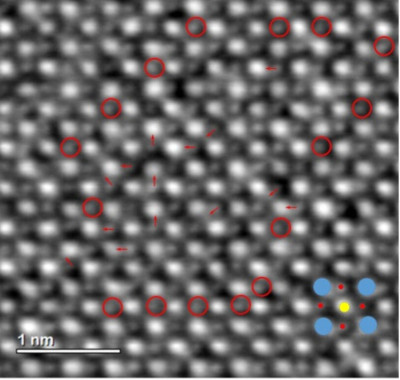News
Research on new transparent ferroelectric ceramics published in Journal of the American Chemical Society
4 November 2025


A team of researchers from Queen Mary have developed a new class of transparent ferroelectric ceramics with a record-breaking electro-optic response—over 65 times higher than that of conventional materials—paving the way for faster, smaller, and more energy-efficient photonic devices.
The linear electro-optic (EO) effect stands as a pillar of contemporary technology, facilitating light modulation through application of electric fields. Materials with increased EO coefficients could lead to more compact and less-expensive EO devices with lower power consumption. There is clear experimental evidence to show that ferroelectric crystals with high domain wall density have very good linear EO properties. However, the exact physical mechanisms are still unclear because domain walls are not active within the optical frequency range. Moreover, compared with single crystals, polycrystalline ceramics have the advantage of low fabrication costs and homogeneous composition distribution. However, the key challenges are to prepare transparent ferroelectric ceramics with high linear EO coefficient and to understand the associated physical mechanism.
The team have used an innovative composition design and a two-step sintering process to achieve remarkable transparency ferroelectric ceramics. These ceramics show ultrahigh linear EO coefficient (~1417 pm/V) which surpasses even that of standard EO single crystal LiNbO3 by over 65 times, and we propose a model to explain this phenomenon.
The transparency is attributed to the wide band gap and the minimization of light scattering of defects such as pores, grain boundaries and domain walls. The ultrahigh linear EO coefficient with good thermal stability can be attributed to sensitive electronic polarization associated with dynamic atomistic polar structures located in switchable and thermally stable domains. This theory is strongly evidenced by dielectric measurements, high resolution transmission electron microscopy, ab initio electronic structure calculations, and multiscale entropy (zentropy) analysis.
| Contact: | Haixue Yan |
| Email: | h.x.yan@qmul.ac.uk |
| Website: | |
| People: | Haixue YAN |




